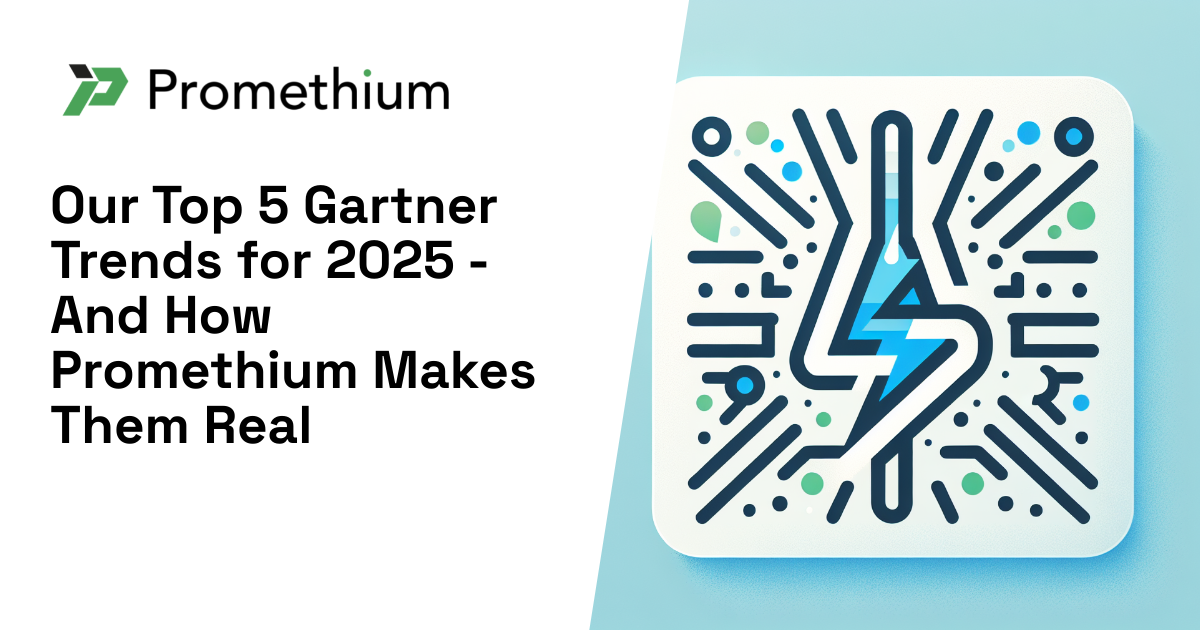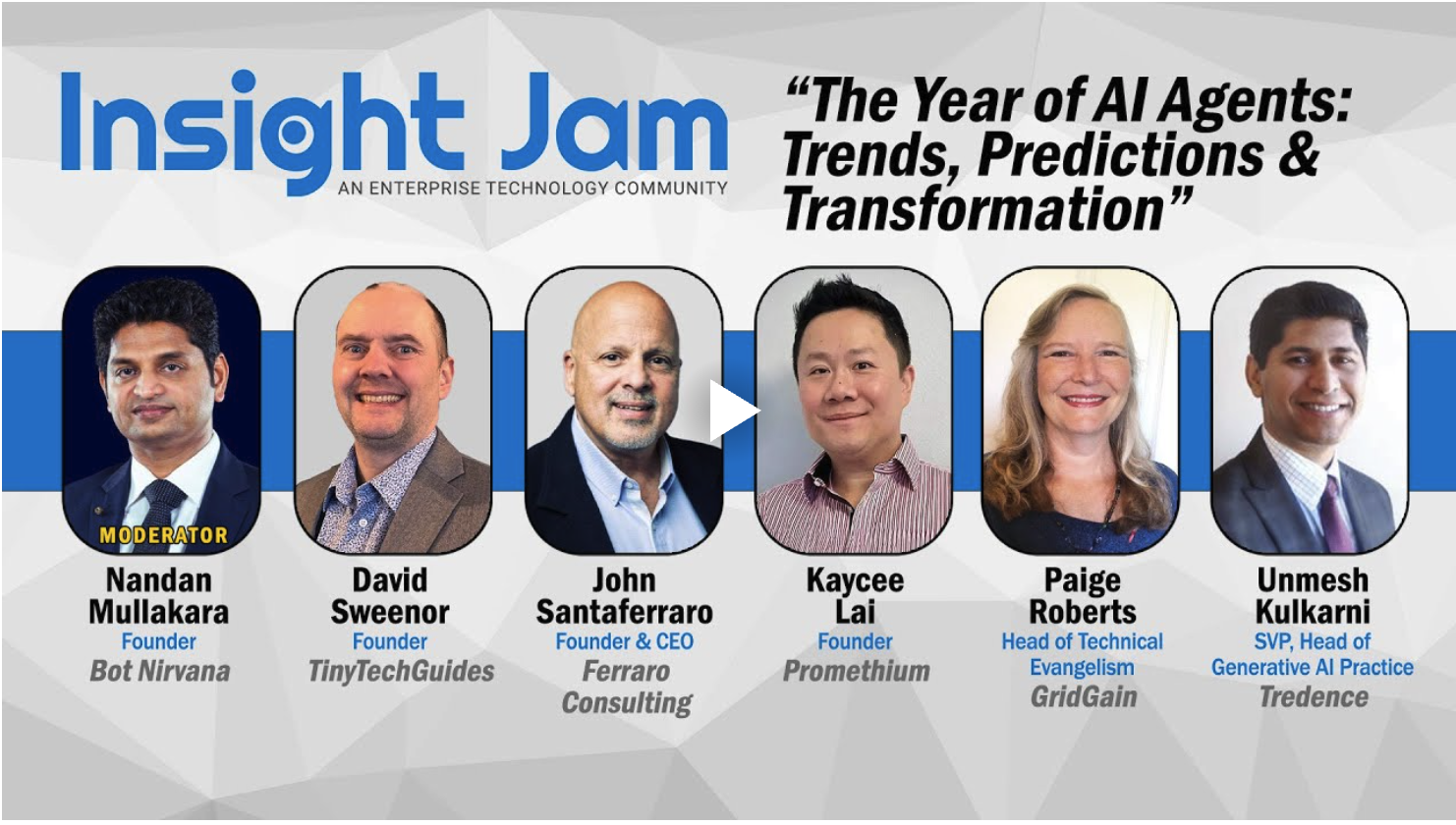Originally published 03/12/2025 on AI Business

Enterprises are accelerating their adoption of generative AI, moving beyond experimentation and piloting into full-scale production. According to Randy Bean’s 2025 AI & Data Leadership Executive Benchmark Survey, 24% of enterprises are now deploying generative AI in production—a staggering 4x increase compared to last year. While this rapid growth signals enthusiasm and potential, it highlights significant challenges organizations must address to unlock generative AI’s full value.
Generative AI adoption is real and growing rapidly. With that adoption, customers are realizing the challenge of ensuring the LLM’s outputs are accurate, relevant, and explainable. This has led to many enterprises re-evaluating their data infrastructure. As a result, organizations are looking to modern data management approaches such as data fabrics, which Gartner defines as “an emerging data management and data integration design concept that supports data access across the business through flexible, reusable, augmented and sometimes automated data integration.”
The Growing Challenges of Scaling Generative AI
As organizations move from piloting generative AI to operationalizing it, their data challenges become more complex and consequential. In the pilot stage, projects typically use curated, pre-prepared datasets. But in production, AI needs to integrate with real-world, often fragmented data environments in real time. This shift magnifies three critical challenges:
These challenges have far-reaching implications. According to Gartner, through 2026, organizations that don’t enable and support AI use cases through AI-ready data practices will see over 60% of AI projects fail and be abandoned.
Traditional data management approaches – reliant on ETL pipelines, manual integrations, and data replication – are no longer sufficient to support generative AI’s scale, speed, and governance needs. Enterprises require a new architectural approach.
Enter Data Fabric: The Architecture of Choice for Generative AI
Data fabric has emerged as the most effective architectural design to address the challenges of scaling generative AI. By enabling seamless connectivity, intelligence, and governance across distributed and diverse data environments, data fabric empowers organizations to create the foundation needed for reliable and scalable AI. According to Laura Craft and Ehitisham Zaidi from Gartner: “…many initiatives get stuck in pilot mode, unable to scale into production because the right engineering is not in place. The data fabric solves this.”
At its core, a data fabric unifies disparate data sources, whether on-premises or in the cloud, into a single, interconnected architecture. This unified layer not only makes it easier to access and analyze data in real time but also provides the metadata, context, and governance needed for generative AI to deliver accurate, relevant, and trustworthy insights.
Here’s how data fabric addresses the challenges of scaling generative AI:
For example, consider a financial institution using generative AI for fraud detection. Without a unified data architecture, data fragmentation across transaction systems, customer databases, and external feeds can lead to blind spots in AI analysis. Data fabric ensures seamless connectivity and relevance, allowing the model to detect anomalies more accurately.
For example, a healthcare provider using generative AI for patient diagnosis can confidently scale its AI operations, knowing that patient data is protected under HIPAA regulations. A data fabric ensures both compliance and transparency, which are critical for trust in AI-generated outputs.
Why Data Fabric is a Strategic Imperative
Data fabric is more than just a solution to generative AI’s challenges – it’s a long-term architectural strategy that aligns with broader enterprise trends in data management. Organizations are increasingly adopting hybrid cloud models, focusing on real-time data access and investing in AI-driven innovation. Data fabric supports these priorities while providing a future-ready data foundation.
By adopting a data fabric, organizations gain significant advantages such as faster time-to-insight for decision-making, greater trust in AI-generated outputs due to built-in governance, improved operational efficiency through seamless integration of legacy and modern systems, or the ability to democratize data access for self-service, empowering both technical and non-technical teams to leverage AI. Those that don’t risk falling behind as their data becomes harder to manage and their AI initiatives fail to scale.
As businesses scale generative AI, they must evaluate their current data architecture and take proactive steps to build AI-ready data practices. Implementing a data fabric is a strategic way to address the core challenges of accuracy, governance and compatibility while also positioning the organization for future growth.
The first step is identifying critical use cases where generative AI can drive value and assessing whether the current data architecture can support these initiatives. From there, organizations can begin to implement data fabric incrementally, focusing on high-priority areas before expanding across the enterprise.
Data fabric represents not just a solution to today’s challenges but also a foundational shift in how organizations approach data and AI. By adopting this architecture, enterprises can scale generative AI with confidence, unlocking innovation and staying competitive in an increasingly AI-driven world.





